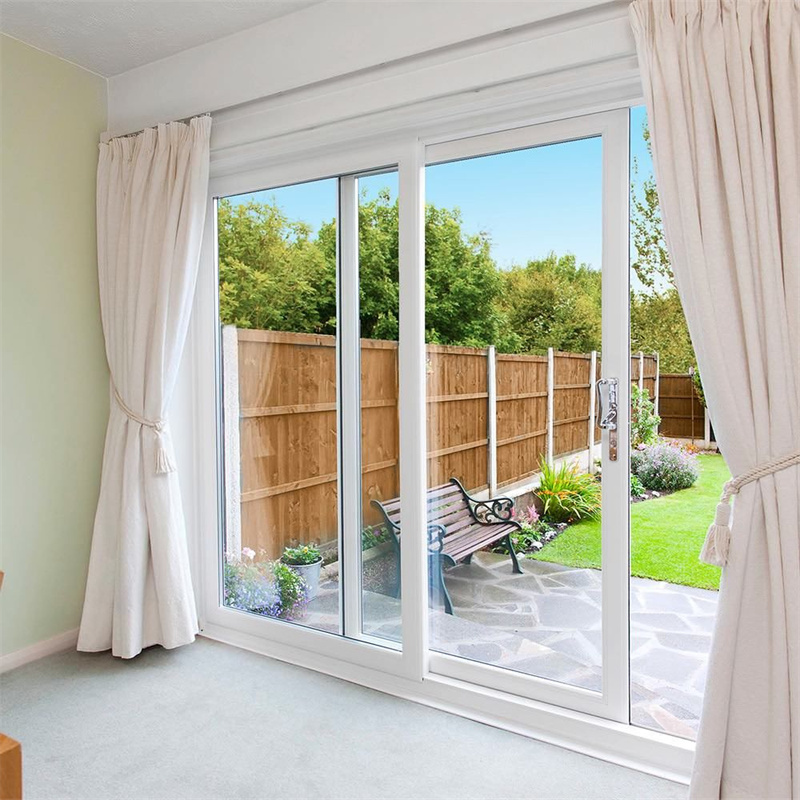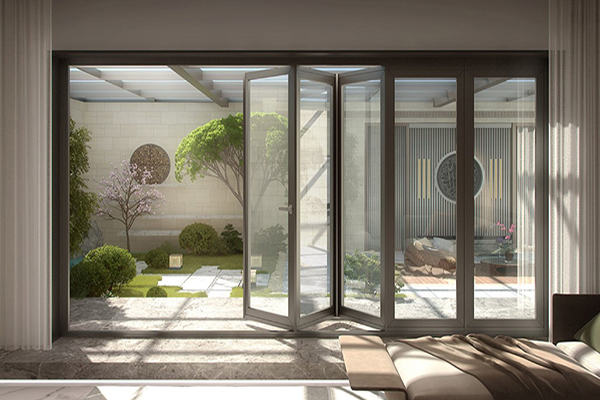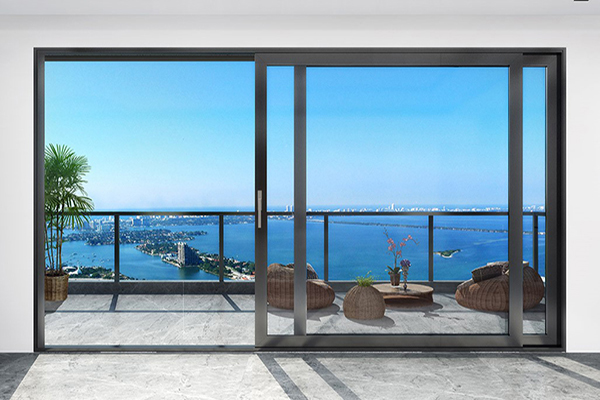Smart Home Era: Integration Solution of Aluminum Windows and IoT Technology
Introduction: The Rise of Smart Homes
The rapid advancement of Internet of Things (IoT) technology has transformed modern living, with smart homes becoming a cornerstone of convenience and efficiency. From intelligent lighting to voice-activated appliances, IoT connects devices to the cloud, enabling seamless automation and control. Amid this evolution, the integration of building materials and home components into smart ecosystems has emerged as a new frontier. Aluminum windows, widely used in residential and commercial buildings for their lightweight, corrosion-resistant, and aesthetic properties, are a prime candidate for such upgrades. Traditionally, aluminum windows serve basic functions like ventilation and natural lighting. However, their potential in smart homes is limited without intelligent enhancements. By integrating IoT technology, features like automatic sensing and remote control can elevate aluminum windows, offering users enhanced comfort, energy efficiency, and connectivity.
This article explores the integration of aluminum windows with IoT technology, emphasizing intelligent upgrades such as automatic sensing and remote control, and discusses their role in advancing the smart home ecosystem while outlining future possibilities.
Integrating Aluminum Windows with IoT Technology
Traditional aluminum windows rely on mechanical structures, with manual or basic mechanical operations for opening and closing. IoT technology transforms these windows by embedding sensors, actuators, and communication modules, enabling integration with smart home systems. The key components of this integration include:
Sensor Integration: Embedding sensors for temperature, humidity, light, and air quality allows aluminum windows to monitor indoor and outdoor conditions in real time. For instance, temperature sensors can detect indoor-outdoor temperature differences, while humidity sensors can identify rain or high moisture levels, triggering appropriate window actions.
Actuators and Automation: Smart aluminum windows are equipped with micro-motors and actuators that enable automated opening and closing based on sensor data or user commands. For example, windows can automatically open to ventilate a room when indoor temperatures rise or close during rain to prevent water ingress.
Communication Modules: Wi-Fi, Zigbee, or Bluetooth protocols enable aluminum windows to connect to smart home hubs, such as smart speakers or mobile apps. This connectivity allows users to monitor and control window states remotely, whether at home or away.
Energy Management Optimization: By integrating with smart home systems, aluminum windows contribute to energy efficiency. For instance, in hot weather, windows can work in tandem with air conditioning systems, prioritizing natural ventilation to reduce cooling energy consumption.
These upgrades transform aluminum windows from passive components into active participants in the smart home ecosystem, enhancing functionality and user experience.

Automatic Sensing: Intelligent Environmental Response
Automatic sensing is a cornerstone of IoT-enabled aluminum windows, allowing them to respond dynamically to environmental changes. Key applications include:
Temperature Regulation: Sensors detect when indoor temperatures exceed comfortable levels, prompting windows to open for natural ventilation. In colder conditions, windows can remain closed to retain heat, optimizing thermal comfort.
Weather Adaptation: Rain sensors ensure windows close automatically during precipitation, protecting interiors from water damage. Similarly, wind speed sensors can secure windows during strong gusts, enhancing safety.
Air Quality Management: Air quality sensors monitor indoor CO2 levels or pollutants, triggering window opening to improve ventilation when needed. This is particularly valuable in urban settings where air quality fluctuates.
Light Optimization: Light sensors adjust window states to balance natural lighting and energy use. For example, windows can open to maximize daylight in the morning or close to reduce glare during peak sunlight hours.
These sensing capabilities enable aluminum windows to operate autonomously, reducing the need for manual intervention and enhancing the smart home’s responsiveness to environmental conditions.
Remote Control: Convenience and Flexibility
Remote control is another transformative feature, empowering users to manage aluminum windows from anywhere. Key aspects include:
Mobile App Integration: Smart home apps allow users to check window status (open/closed) and issue commands remotely. For instance, a user can open windows to ventilate their home while returning from work or close them during unexpected rain while away.
Voice Control: Integration with platforms like Amazon Alexa or Google Home enables voice-activated control. Users can issue commands like “Open the living room windows” for hands-free operation.
Scheduling and Automation Rules: Users can set schedules for window operations, such as opening windows in the morning for fresh air or closing them at night for security. Automation rules can also link window actions to other smart devices, such as closing windows when a security system is armed.
Real-Time Notifications: IoT-enabled windows can send alerts to users’ devices, notifying them of status changes (e.g., a window closing due to rain) or potential issues (e.g., a window failing to close properly).
Remote control enhances user convenience, providing flexibility and peace of mind while aligning with the connected nature of smart homes.
Benefits of IoT-Enabled Aluminum Windows
The integration of IoT technology with aluminum windows offers numerous benefits:
Enhanced Comfort: Automatic sensing ensures optimal indoor conditions, while remote control allows personalized adjustments.
Energy Efficiency: Intelligent ventilation and light management reduce reliance on heating, cooling, and artificial lighting, lowering energy costs.
Security and Safety: Automated closing during adverse weather and remote monitoring enhance home security.
Sustainability: By optimizing energy use and leveraging durable aluminum, these windows contribute to eco-friendly living.
These advantages make IoT-enabled aluminum windows a valuable addition to smart homes, aligning with modern demands for efficiency and connectivity.
Challenges and Considerations
Despite their potential, integrating IoT with aluminum windows presents challenges:
Cost: The addition of sensors, actuators, and communication modules increases manufacturing and installation costs, which may deter some consumers.
Compatibility: Ensuring seamless integration with diverse smart home platforms requires standardized protocols and robust software support.
Maintenance: IoT components may require periodic updates or repairs, necessitating accessible maintenance services.
Privacy and Security: Connected devices are vulnerable to cyber threats, requiring strong encryption and secure communication protocols to protect user data.
Addressing these challenges through cost-effective designs, industry standards, and robust cybersecurity measures is critical for widespread adoption.
Future Trends and Opportunities
The fusion of aluminum windows and IoT technology is poised for further innovation. Emerging trends include:
AI Integration: Artificial intelligence can enhance window automation by learning user preferences and predicting optimal actions based on weather forecasts or occupancy patterns.
Energy Harvesting: Solar-powered sensors and actuators could make IoT windows self-sustaining, reducing reliance on external power sources.
Advanced Materials: Combining aluminum with smart glass technologies, such as electrochromic glass, could enable windows to adjust transparency alongside IoT functions.
Mass Adoption: As IoT component costs decrease and smart home adoption grows, IoT-enabled aluminum windows could become standard in new constructions.
These advancements promise to further integrate aluminum windows into the smart home ecosystem, driving efficiency and innovation.
Conclusion
The integration of aluminum windows with IoT technology marks a significant step in the evolution of smart homes. By enabling automatic sensing and remote control, these windows transform from static building components into dynamic, intelligent systems that enhance comfort, energy efficiency, and connectivity. While challenges like cost and cybersecurity remain, ongoing innovations in AI, materials, and energy solutions are paving the way for broader adoption. As the smart home era progresses, IoT-enabled aluminum windows will play a pivotal role in creating sustainable, responsive, and user-centric living environments, redefining the future of home design.
Welcome to choose the Aluminum Windows of Liaoning Etaifeng Windoor Co.,Ltd.
Join Our Network Today!
Let’s build the future of architecture together. Our excess production capacity means faster lead times and competitive pricing, giving you an edge in your market. Become a distributor or agent with Liaoning Etaifeng Windoor Co.,Ltd and unlock access to premium aluminum windows, free design support, and exclusive sample corners.
Contact us
david@e-tfeng.com
www.e-tfeng.com
to explore partnership opportunities and start delivering world-class solutions to your clients.










